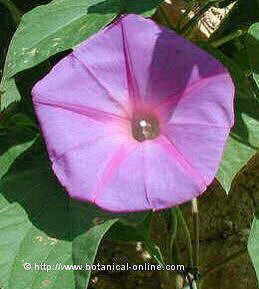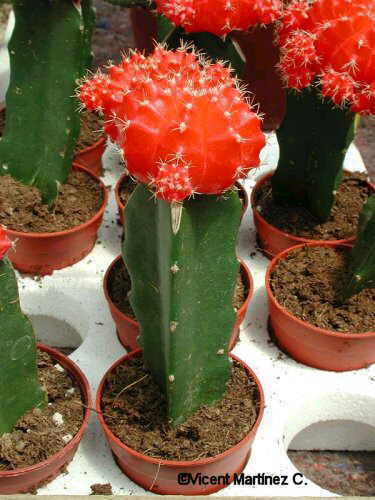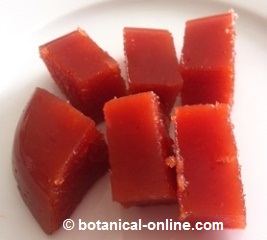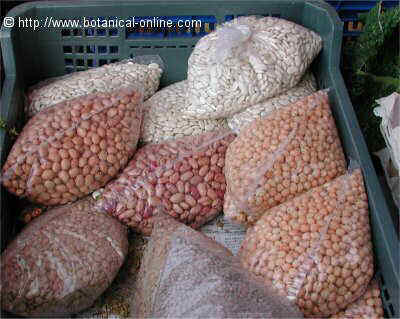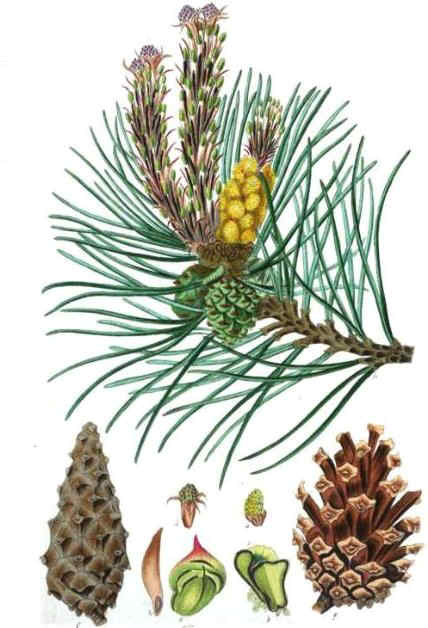Contents
How to grow chayotes
Chayote. Irrigation
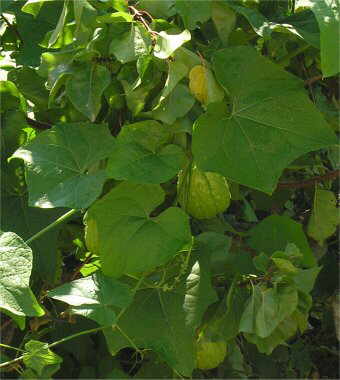
Chayote is a plant that needs plenty of water. It must be planted in places where you can provide an abundant and constant irrigation. In its original place, it receives between 1000 and 2000 liters per year, consequently they are usually found near streams, in ravines or near stream channels.
If you want to grow it in less rainy weather, it should be watered regularly. During less warm seasons, an abundant weekly watering will be enough but during the growing season you will have to water it a few times a week, letting the water soak the ground well. In summer, daily watering may be necessary, even a couple of times each day. Once the fruits begin to mature, watering should be distanced so as the fruits can get a higher degree of sweetness.
When chayores are planted in large containers, we must ensure that they can hold the moisture. To test it, we will introduce the finger into the soil, if this is dry, we will water it. The lack of irrigation makes the leaves to become dry and fall, starting from the lower ones and finally the entire plant dries.
Although you need lots of water, this plant prefers loose ground with good drainage. The lack of drainage causes the appearance of rot or fungal diseases.
Chayote. Environment and exposure:
Chayote plant it is a vine from tropical America that needs to be provided with the environment close to the original conditions in order to grow well and produce abundant fruit. In their original place, it grows in cool places among the trees of the evergreen forest, not far from streams or rivers.
In non-tropical areas with warm, moist climate, it is best planted near a wall, well protected from winds and facing south, to face the sun all afternoon. In Mediterranean hot climates, it is better to direct it towards the east, so that the sunlight gets it well in the morning, because in the afternoon sun could raise the temperature too much. In either case, a wall may serve to support the guidelines where the plant can coil up.
It is even more appropriate, especially in hot place, make a bower on poles joined together by wires, so the plant can climb and twist among them into a kind of canopy, so that the upper leaves provide protection from the sun and the adequate shade for the lower branches to have more shade and lower temperatures.
A couple of trees that provide some shade to the whole may be necessary to withstand the heat of a warmer summer climate.
In more familiar plantations (orchards and gardens), it is appropriate to plant near a tree so the branches thereof can provide the support for it to grow. At the same time, the tree can provide some shade in places where the temperature is too high in summer.
In banana plantations, you should leave a distance of approximately 2 m between these plants and the bananas.
Strive to ensure that the plant has the best temperature. This is situated between 13 and 21 º C. Although it can withstand higher temperatures. excessive heat damages it and reduces the production and the fruit size.
In places with a hotter, drier climate, the use of aerial sprays may be helpful to increase humidity and decrease the temperature.
Chayote. Soil and fertilizer
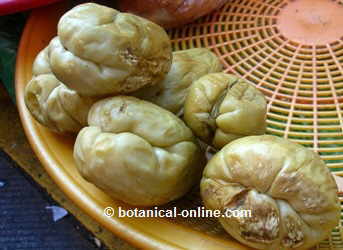
Although it supports virtually all types of soil, it prefers loose soils, rich in organic matter. The best fertilizer is well done manure or compost. A good way to get an ideal soil is to prepare it well prior to planting.
To do this, it is best to dig a hole two feet deep by three feet wide. We will add 1 / 3 part of manure or compost and about four handfuls of chemical fertilizer into the excavated soil. Then, we will stir the mixture and cover the hole with it. The field is ready to accommodate the new plant.
Mature plants may need an extra annual fertilization with the addition of phosphorus.
Chayote. Flowering, fruition and collection
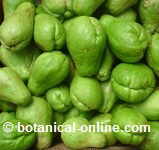
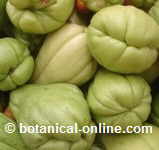
Different types of chayotes
In its natural place, chayotes reproduce by seeds. The fruits fall to the ground when ripe. Once on the ground, they rot. In this process, they produce enzymes that initiate root development from seed locked up inside the fruit.
The cultivated chayote plants do not follow this same process. The fruit, cut from the tree, if kept in a damp and dark place, develop buds from which new leaves arise.
This fruit has a great ability to germinate and may do so in unexpected places. In hot countries, for example, when leaving a fruit on the marble kitchen, after a few days, a tender shoot appears which begins to grow. When it reaches about 20 or 25 cm, it is ready to plant.
How to plant chayotes?
Seeding and preparation of the seed
In cool and shaded places you do not need to remove the seed when planting chayotes. Simply place the fruit on the ground and cover the little part of where germination has occurred for this to develop roots and start growing.
In larger plantations, usually pre-germinated seed is planted directly on the ground, with a slight grip on it without needing to cover it. The fruit, once collected, can be stored up to one month in a cool place, without its chances of germination to be affected.
In warm and sunny places it is best to plant them first by seedlings. It also can be planted in the same way in more shaded places. The specimens planted in the nursery and then transplanted in the field have greater size and strength than those planted directly in the field.
Seeds are sown in small pots with the sunken part down so they remain are fairly buried in the ground. Subsequently, they are watered well and placed in the shade. During the first four weeks, they are provided with a sufficient irrigation for them to maintain the necessary moisture to enable them to germinate. After the first month, they will be placed in the sun. When the plant has grown about 30 or 35 cm and the stem is about a finger thick, we will transplant it the final place previously labored.
Planting distance in the intensive production depends on soil conditions, which are the ones that determine the size of plants. This can range from 8 x 8 meters for very productive land, to 4X4 in the less productive areas. Plantations are sometimes made more tight and once the seedlings begin to grow, they are cleared by eliminating those that grow with less force, until they are distanced the necessary space required.
Reproduction by cuttings
It can also be reproduced by means of cuttings. To do this, cut a shoot of about 30 cm fitted with a pair of leaves, and introduce it on the wet ground. Intensive plantations usually perform this task in a greenhouse. First, they cut a cutting with required size and place it in a liquid growth hormone. Then, they plant it in a mixture of sandy soil, in order for it to develop roots.
 Chayote. Maintenance
Chayote. Maintenance
Site preparation requires to prepare the holes with the appropriate fertilizer, clearing and plowing.
Plowing the field in the form of ridges is an ideal solution to place the seed over them and keep the plant out from the lower parts of the ground where excessive water could hurt its growth and encourage the emergence of diseases.
Chayote plants do not require any other heavy maintenance work than the need to keep the soil weed free, guide new growth into the wires and provide adequate moisture. Weed control will be in depth before planting. This work is not necessary once the plant is established because it does not let the grass grow under it. Guiding is necessary for the plant to grow properly.
Collection and storage of fruits
Chayotes should be harvested when they are in their optimum ripeness. This is recognized by looking at the fruit stalk. When this begins to color, it can be collected. When harvesting it, leave a piece of stem on the fruit. If you cut it too tight, the fruit may rot before removing it.
The fruits should be stored in a cool, dry place. If stored under these conditions, they can hold up to six months.
![]() More information on chayotes.
More information on chayotes.



